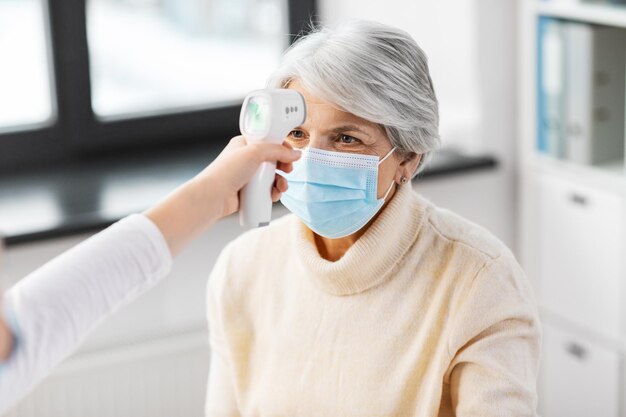Can Cataracts Be Reversed? Understanding the Possibilities and Realities
When it comes to eye health, one of the most common concerns is cataracts, a condition where the clear lens of the eye becomes cloudy, impairing vision. But one question many people have is: Can cataracts be reversed? Let's explore this topic thoroughly, providing clarity and insights into what cataracts are, current treatment options, prevention strategies, and the hope for future solutions.
⚡ Understanding Cataracts
Cataracts are a natural part of the aging process for many people. They occur when proteins in the lens of the eye begin to break down, leading to cloudiness that affects vision quality. While they typically develop slowly, the progressive nature of cataracts eventually interferes with daily activities and may require medical attention.
Common Symptoms of Cataracts
- Blurry vision: Initially, you might notice your vision becoming blurred or cloudy.
- Difficulty with night vision: Cataracts often make it harder to see at night, especially while driving.
- Sensitivity to light and glare: Bright lights can appear too harsh, creating halos or glare.
- Color changes: Colors may appear faded or less vibrant.
The exact cause of cataracts isn't fully understood, but several risk factors may increase the likelihood of developing them, such as age, diabetes, smoking, excessive sun exposure, and a family history of cataracts.
🚫 Can Cataracts Be Reversed Without Surgery?
Currently, there is no scientifically proven method to reverse cataracts without surgery. Once the proteins in the lens have clumped together and caused cloudiness, they cannot be returned to their original, clear state through medications, eye drops, or lifestyle changes.
Addressing Misconceptions
- Miracle Cures and Supplements: Be cautious about products or regimes claiming to reverse cataracts naturally. While maintaining a healthy diet rich in antioxidants is beneficial for overall eye health, it does not reverse cataracts.
- Eye Drops: Some eye drops are marketed for their ability to manage cataracts. Although research is intriguing, they are not yet a substitute for surgical treatment.
🏥 Cataract Surgery: The Standard Solution
Surgery remains the most effective treatment for cataracts. The procedure is widely performed and has a high success rate, significantly improving vision for most individuals.
How Cataract Surgery Works
- Removal of the Clouded Lens: During the operation, the clouded lens is removed and replaced with a clear artificial lens known as an intraocular lens (IOL).
- Benefits and Recovery: This is usually an outpatient procedure, meaning you can go home the same day. Most people experience improved vision within days.
While the idea of surgery can be daunting, advances in medical technology have made cataract surgery one of the safest and most effective procedures. Consulting with a qualified ophthalmologist is crucial for understanding what to expect and making an informed decision.
💡 How to Slow the Progression of Cataracts
While you can't reverse cataracts naturally, there are lifestyle strategies to potentially slow their progression:
- Regular Eye Exams: Early detection is vital. Routine checks can monitor the progression and help catch any other issues.
- Protective Eyewear: Sunglasses that block harmful UV rays can protect your eyes from sun damage.
- Healthy Lifestyle Choices:
- Quit Smoking: Smoking is a significant risk factor for cataracts.
- Balanced Diet: Consume foods rich in antioxidants like leafy greens, fruits, and nuts.
- Manage Health: Control conditions like diabetes, which can exacerbate cataract development.
🌟 Future Prospects in Cataract Treatment
Research continues into various potential treatments that may change the landscape of cataract care in the future. Innovations include advanced lens technology and genetic studies that could one day provide alternative solutions or preventative strategies.
The Role of Eye Health Research
- Genetic Factors: Scientists are studying genetic predispositions to understand better who is at risk and how cataract formation begins.
- Biochemical Solutions: Some researchers explore biochemical treatments that might dissolve cataract formation or improve protein stability in the lens.
While not available yet, these efforts underline the ongoing commitment to advancing medical science in the quest for non-surgical treatment options.
🔍 Quick Summary: Essential Takeaways on Cataracts
Here is a concise bullet-point list of key facts and strategies related to cataracts:
- 🌡️ Cataracts Are Common: A natural part of aging that can impair vision.
- 💪 No Reversal Without Surgery: Currently, surgery is the only effective way to treat cataracts.
- 👓 Lifestyle Matters: Healthy habits can slow cataract progression.
- 🔬 Hope in Innovation: Ongoing research offers hope for future breakthroughs in non-surgical treatments.
👁️ Empower Yourself with Knowledge
Understanding cataracts and their treatment options empowers you to make informed decisions about your eye health. While reversing cataracts without medical intervention isn't yet possible, modern surgical techniques offer effective restoration of vision. Meanwhile, preventative strategies and lifestyle choices serve as helpful tools in managing eye health long-term. Keep abreast of new research, and don't hesitate to seek professional advice on maintaining optimal vision as you navigate the challenges posed by cataracts.
